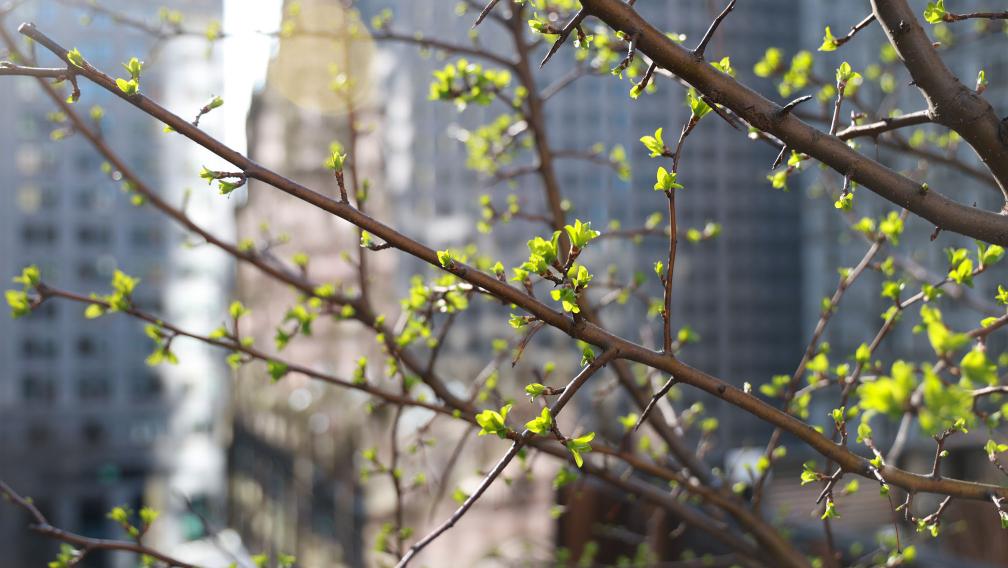Five Ways Into Sunday’s Scripture: Seeing and Believing

Early on the first day of the week, while it was still dark, Mary Magdalene came to the tomb and saw that the stone had been removed from the tomb. So she ran and went to Simon Peter and the other disciple, the one whom Jesus loved, and said to them, “They have taken the Lord out of the tomb, and we do not know where they have laid him.” Then Peter and the other disciple set out and went toward the tomb. The two were running together, but the other disciple outran Peter and reached the tomb first. He bent down to look in and saw the linen wrappings lying there, but he did not go in. Then Simon Peter came, following him, and went into the tomb. He saw the linen wrappings lying there, and the cloth that had been on Jesus’s head, not lying with the linen wrappings but rolled up in a place by itself. Then the other disciple, who reached the tomb first, also went in, and he saw and believed, for as yet they did not understand the scripture, that he must rise from the dead. Then the disciples returned to their homes.
But Mary stood weeping outside the tomb. As she wept, she bent over to look into the tomb, and she saw two angels in white sitting where the body of Jesus had been lying, one at the head and the other at the feet. They said to her, “Woman, why are you weeping?” She said to them, “They have taken away my Lord, and I do not know where they have laid him.” When she had said this, she turned around and saw Jesus standing there, but she did not know that it was Jesus. Jesus said to her, “Woman, why are you weeping? Whom are you looking for?” Supposing him to be the gardener, she said to him, “Sir, if you have carried him away, tell me where you have laid him, and I will take him away.” Jesus said to her, “Mary!” She turned and said to him in Hebrew, “Rabbouni!” (which means Teacher). Jesus said to her, “Do not touch me, because I have not yet ascended to the Father. But go to my brothers and say to them, ‘I am ascending to my Father and your Father, to my God and your God.’” Mary Magdalene went and announced to the disciples, “I have seen the Lord,” and she told them that he had said these things to her.
John 20:1–18
In John’s Gospel, “seeing and believing” is a model of faith. In this resurrection story, the beloved disciple sees and believes right away. Mary believes once she sees and recognizes Jesus. Peter’s belief will come later. What does it mean for us to see and believe?
The miracle of Easter is that death is not the end. That can be a hard concept to hang on to as the war in Ukraine rages on, climate change continues to take its toll, and we mourn yet another school shooting. But seeing and believing in this Gospel tells us to follow Jesus by breaking out of our assumptions of how the world works. We are called to bring a new lens so we can receive the gift of hope, possibility, and liberation. And this kind of seeing and believing can change the world.
—Ruth Frey
THEOLOGY
“In the first creation story God drove Eve and Adam out of the garden. But in this new creation Jesus sends Mary out of the garden rejoicing,” writes Lucy Lind Hogan.
SOCIAL JUSTICE
Jan Rippentrop notes, “Mary’s testimony reveals…the politics of proclamation, [which] include issues of access and power, but more importantly perhaps, emerge from and carry forward God’s disruptive and liberative action.”
POETRY
“Messenger” by Mary Oliver invites us into the work of “loving the world.”
VISUAL ART
A beautiful image of Mary and Jesus in the garden.
MUSIC
J.S. Bach’s Easter Oratorio. Play this as you are getting ready for church on Easter morning. Christ is risen!
Coming Soon
Worship with us, in person or online, this Easter.
Sundays beginning April 16, join us for the new Discovery series Lamentation and Joy in the Bible. The Bible mirrors our own lives, including the highs and the lows. Explore joy and lamentation in the Bible in this series, with a special session with pilgrims returning from Greece and Rome.





